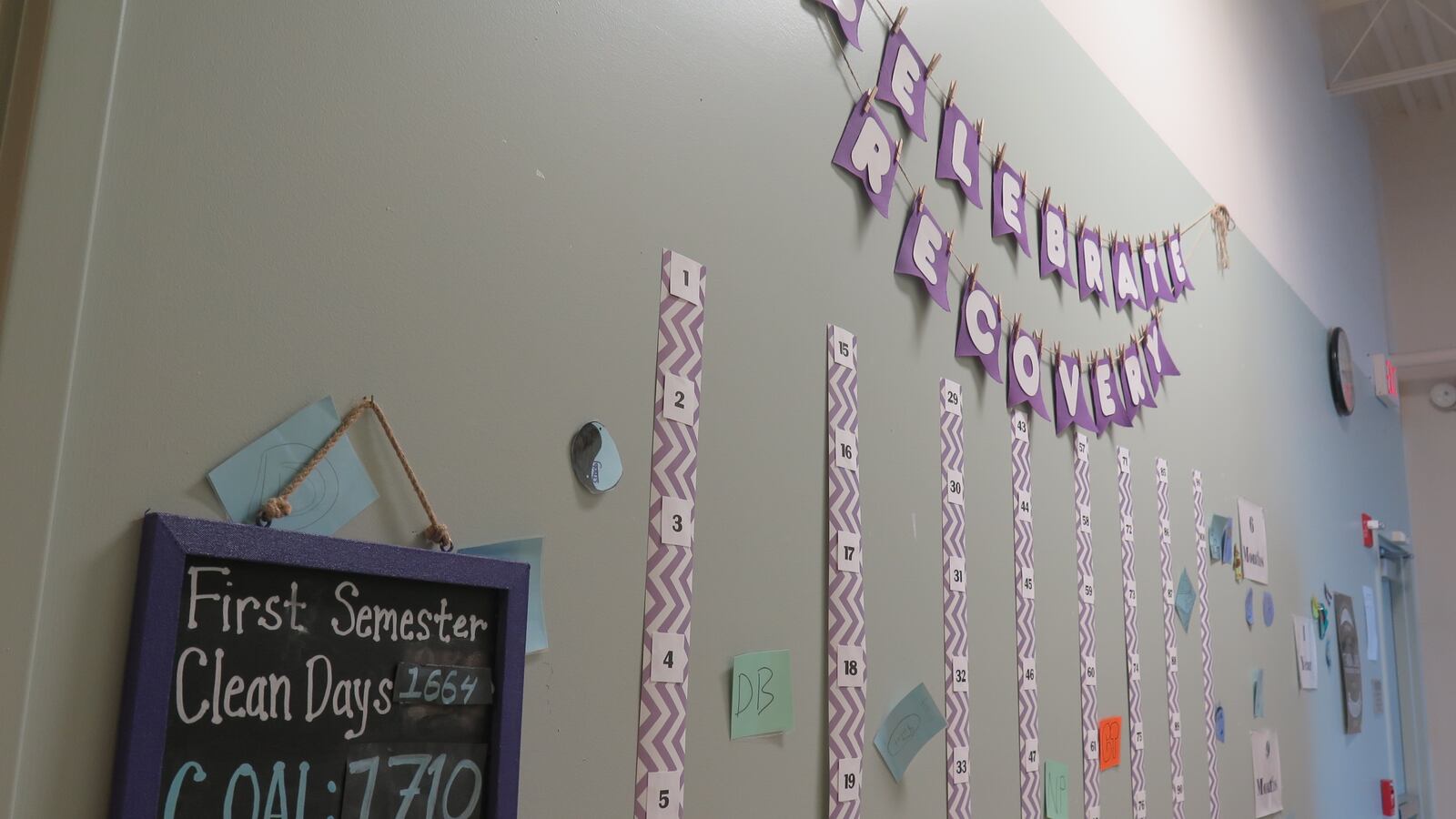In an effort to attract more students, an Indianapolis charter school for teens who have struggled with drug and alcohol addiction is seeking a new charter and a new location. It is also considering a partnership with Indianapolis Public Schools.
Hope Academy, which enrolls 32 students, opened in 2006 inside the Fairbanks Addiction Treatment and Recovery Center in Lawrence Township. The rehabilitation center has not only housed Hope, but has also provided the school administrative support and significant financial backing.
The school’s relationship to Fairbanks, however, has also made it harder to recruit some students, said Rachelle Gardner, the school’s chief operating officer. That’s because Hope is often seen as a treatment option, rather than a school, and its relatively far-flung location on the northeast side of the city can make it inaccessible for many families, she said.
“The dream of the school was to have a much larger impact on the community,” Gardner said.
The school aims to move closer to downtown, although a location has not been chosen, and develop stronger partnerships with Marion County school districts, Gardner said. Officials hope those efforts enable it to roughly double its enrollment to about 60-75 students.
Ahead of anticipated changes, the school has formed a new nonprofit entity and is seeking a new charter from the Indianapolis mayor’s office. The Indianapolis Charter School Board held a hearing to review the school’s initial application Wednesday, and is expected to vote on November 21.
Hope also submitted a letter of interest in an innovation partnership with Indianapolis Public Schools, and is in early-stage discussions with the district, Gardner said. Joining the innovation network allows charter schools to gain access to services, such as busing and food service and, potentially, to space in district buildings.
Gardner believes a partnership with the district would raise awareness of the school as an option and make it more likely that counselors and other staff would refer students to Hope.
“We’re different than other schools. It’s not us just coming in to enroll students away from IPS,” Gardner said. “Our purpose really is to help the townships and the private schools as well with those students that they just don’t know how to help anymore.”
Recruiting new students would be essential for Hope. The school gets per student funding from the state, as well as from grants and philanthropists. But it still relies heavily on Fairbanks for funding, and in order to be financially sustainable without that subsidy, it would likely need to significantly increase enrollment.
That’s a concern raised by Kenneth Riggins, chairman of the Indianapolis Charter School Board, which oversees the existing school and is considering Hope’s application for a new charter.
“The finances are something that is extremely important,” said Riggins, who said he has not yet decided whether to support the school. But, Riggins added, if the school is able to attract more students it could be financially sustainable: “If they were to find a location central for everyone, I think it increases the opportunity to have more students.”


